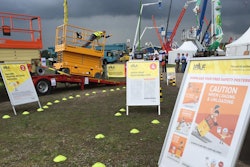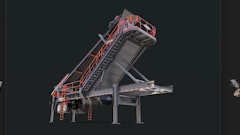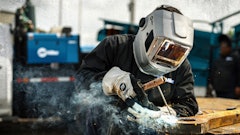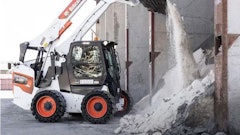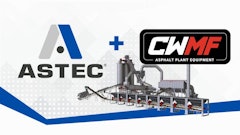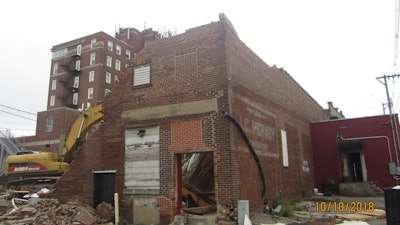
Information from this article was first published in Demolition Magazine and is being reused with permission from the National Demolition Association.
By Katie Condon
July 19, 2018, was a terrifying day in Marshalltown, Iowa. At 4:32 p.m., an EF3 tornado with peak winds of 144 miles per hour struck the north side of the city, leaving a path of destruction almost 9 miles long. Miraculously, there were no deaths as a result of the storm, but several homes, businesses, historic buildings and the spire atop the courthouse were completely obliterated. Since 2002, the town had invested over $50 million in building renovations. Its residents saw all of their hard work, time and money annihilated in a matter of minutes.
Nearly a year later, the town of 27,552 is still recovering from the damage. However, many are grateful for the fast, thorough work of DeCarlo Demolition, a National Demolition Association (NDA) member company based out of Des Moines, Iowa. A locally owned third-generation business, DeCarlo Demolition has been offering its demolition services for the past 90 years. Last year, the crew stepped up to help their neighbors in need. Dan DeCarlo, the company’s president, says, “When we told our customers that we wanted to delay their projects to help with the demolition efforts in Marshalltown, they all understood. Part of what makes Iowa so great is the understanding that when devastation hits, we all come together.”
A town in recovery
Demolition following a major storm can be a unique project to take on. In Marshalltown, the DeCarlo crew provided hazardous material abatement and the removal of damaged structures. The team safely and successfully removed the wreckage with a clean slate for the construction crew to start rebuilding.
It was important for the crew to assess the specific damages created by the tornado, rather than quickly remove all materials. “Every project brings an element of surprise because no two buildings fall the same way,” DeCarlo says. “The remains of a tornado strike add much more mystery to what may happen while bringing buildings down.” Thankfully, in this instance, the surprises were kept to a minimum. “The construction of this building is something common to our operators, so we were able to tackle it head on and leave a blank slate for the next contractor to build the vision of the customer,” he says.
One step at a time
DeCarlo Demolition won the contract to perform this much-needed work mostly based on its experience, name and recognition. Before any demo work could begin, the team had to complete environmental reports as well as permitting and utility work. “Demolition is an art,” DeCarlo says, “and it must be treated as such.”
The crew had to determine the structures that could remain standing and those that incurred too much damage. They also found a way to remove the wreckage while preserving what was still salvageable. “Because this was not a standalone structure, our specialized demolition crew was sent in to separate the building being removed from the structures remaining intact,” DeCarlo stated. Once the all-clear was given, the demolition equipment was mobilized to the site to start ripping into the structure. Debris was carefully brought down and separated into recyclables, hazardous materials and landfill loads. The DeCarlo team sent trucks from its Des Moines headquarters to facilitate the hauling. Equipment was then mobilized at the next structure to do it all again.
Depending on how a project is constructed, demolition can yield a variety of recyclable materials, including metal, copper, wire, block and concrete. DeCarlo Demolition employs a thorough recycling process and works to retain as much material as the time frame and schedule allows. “If time allows, our specialized interior demotion crew is commissioned to the site beforehand to strip the contents by hand,” DeCarlo says. “We’ve found that using roll-off dumpsters in these processes has streamlined the time it takes to send the materials in different directions.”
Maximize Construction Recycling Efforts for Sustainable Building
Separation of building structures
Successfully separating buildings poses a challenge. “Basically, a single structure is being untied from itself and getting separated into smaller sections,” DeCarlo says. It requires a knowledge of “where your upright columns are holding the load of the roof and how it stabilizes the wall from falling over.” In Marshalltown, the crew had to find productive ways to remove structures without damaging the surrounding buildings. The team took these tricky removal projects one step at a time, overcoming technicalities as they arose. Thankfully, the crew’s extensive collective knowledge in the demolition industry and long history of conquering extremely challenging obstacles was a huge asset to the project.
DeCarlo understood that unexpected trials would undoubtedly arise, even with extensive pre-planning. He says, “As we tore deeper into the project, we discovered that the trusses were tied into the structures surrounding the building being raised.” The team wanted to be sure that they could remove the trusses without harming the rest of the structure. In order to do this, they called in a veteran operator with over 32 years of experience. “Through his calm and thoughtful process, we were able to bend and twist the trusses just enough to remove them and get the roof to fall flat to the ground without harm,” he says.
Putting people and planet first
Because the site had some environmental concerns, licensed environmental professionals were brought in to ensure all necessary precautions were taken to in compliance with the EPA’s health hazard prevention guidelines. Due to the fact that the project started on the tail end of cleanup, specialists were on-site to ensure that every safety measure was exceeded during the project and a safe bill of health was issued.
The team’s advice for a safe demo is to complete every necessary step. “Cutting corners or taking shortcuts can end very badly. Take pride in your work and do every step the right way,” DeCarlo says. He reminds that paying attention is crucial — life-and-death situations can happen all too quickly.
From the wreckage
DeCarlo considers the job extremely successful. Not only was the job completed on time but it was also on budget and with minimal disruptions to surrounding businesses. This is crucial considering the massive loss the city already incurred. The DeCarlo Demolition job was the first step toward rebuilding a city, and the crew was able to streamline the process, recycle materials and help the town move forward.





